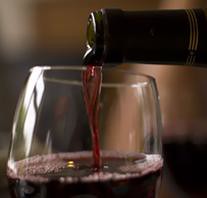How To Make Wine With Fruit
Monday, June 11, 2012
options. Do you want a fruit-based wine, or do you want to produce wine from
concentrate? Would you rather use homegrown grapes or store-bought? On of
the most rewarding and interesting aspects of the home wine making process is
the ability and freedom to develop your own flavor profiles and signature wines.
Creating wine from fruit (especially if it’s homegrown!) allows for experimentation
and exotic flavor development. Wine developed from fruit can take on a variety of
forms and flavors, and can be created using anything from bananas to blackberries!
Once you pick a fruit of your choice, find a reputable recipe for your creation. You
can find many recipe options in wine making books, as well as on the internet
under wine making resources. However, be careful that you chose a recipe from a
dependable source, to ensure that your wine turns out well. If you are stumped on
where to find a good recipe, check out our wine recipe chart that breaks down wine
recipes by fruit type. These recipes have been tested time and time again, and are
proven to make excellent batches of wine (5 gallons of wine per recipe).
Once you have successfully chosen a recipe, pull out your wine making checklist and
ensure that you have all the following ingredients:
Yeast Nutrient. This is necessary energy for the yeast that guarantees that your
yeast will ferment and produce alcohol.
Yeast Energizer. This is used when fruit lacks the nutrients required to ensure that
yeast ferments. It has a wider breadth of nutrients that yeast nutrient doesn’t offer.
Acid Blend. This is what gives your wine a specific edge or sharpness. It adds acid
that natural wine may be lacking.
Pectic Enzyme. This produces clear wine and breaks down the fruit to extract
maximum flavor.
Yeast. Yeast takes sugar and produces alcohol! It’s a vital part of the wine making
process.
Wine Tannin. This brings clarity to the wine as well as increases flavor profiles in
the wine. It also helps the wine flavor develop during the aging process.
Campden Tablets. These tablets are crucial to ensuring that your wine doesn’t
spoil. They are added prior to fermentation as well as the bottling process.
Once you have all these ingredients in place, creating a distinct flavorful wine will
depend on successfully balancing the fruit, sugars, water, and further ingredients.
The wine making process itself is relatively easy. Combine all ingredients and
add some patience. After a few days have passed, it is necessary to remove any
extraneous pulp and siphon the wine off the sediment that develops.
The wine making process is fairly straightforward. With a few simple ingredients
and sturdy wine making equipment, you can produce numerous batches of wine
that will last over time. Once you become familiar with the wine making process,
experimenting and developing unique flavor profiles becomes an enjoyable part of
developing a final creation. For more tips on getting started with the wine making
process, visit www.eckraus.com.
Guest Post from E.C. Kraus
Read more...

 Follow Me On Twitter
Follow Me On Twitter





